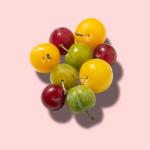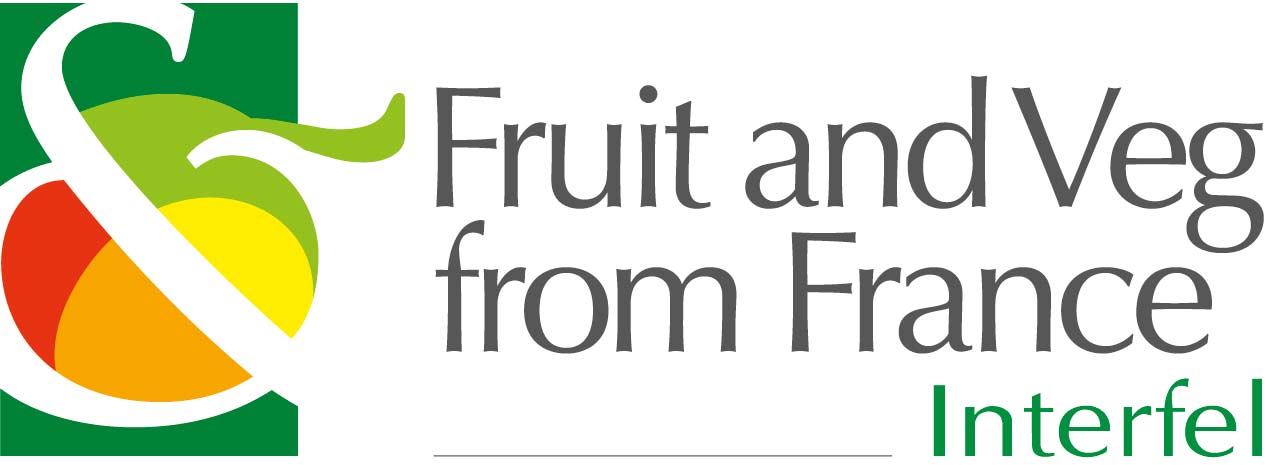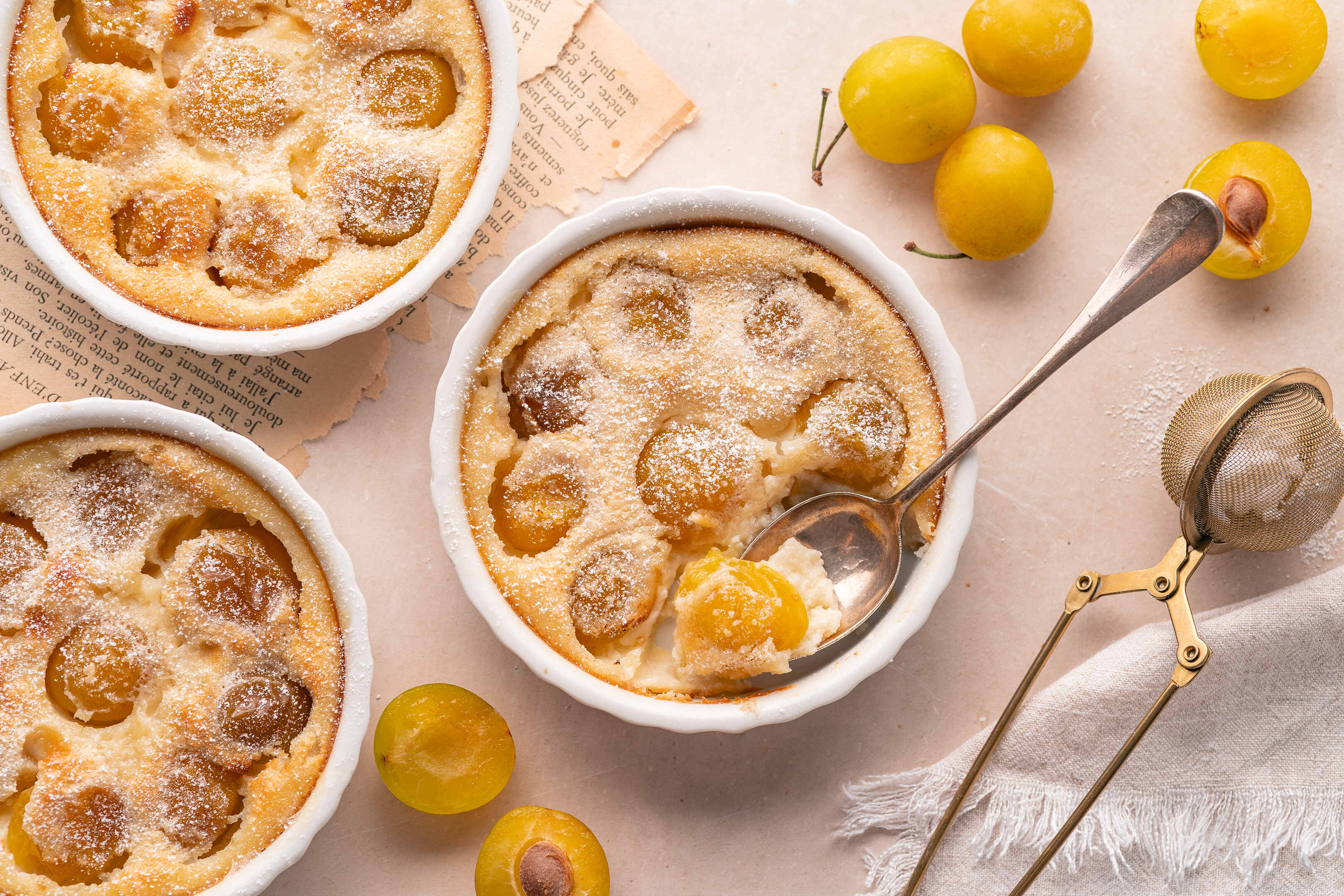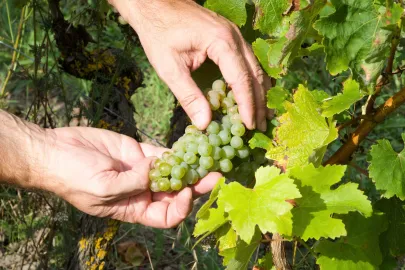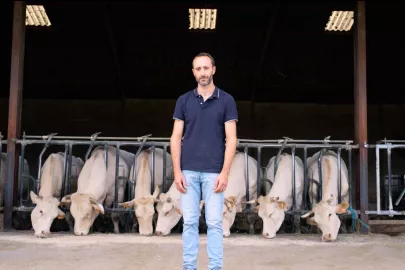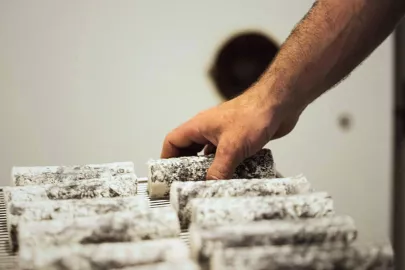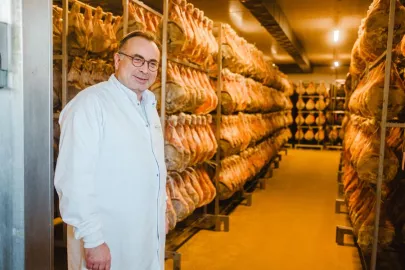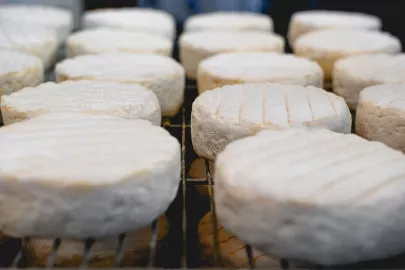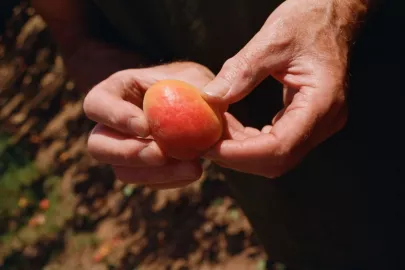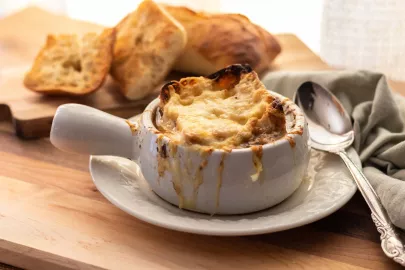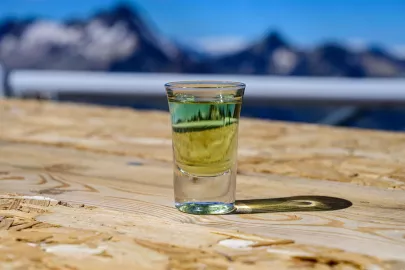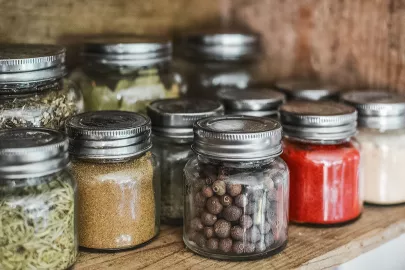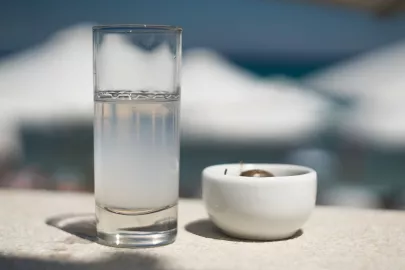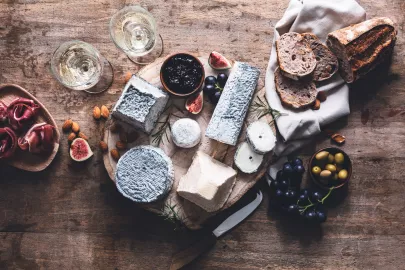Consider the plum. Sweetly tart and bursting with flavour, the popular summer stone fruit is a staple of many a French table. Dozens of varieties grow in France—Mirabelle, Quetsch and Reines-Claudes among the more popular varieties—in a rainbow of pretty hues ranging from yellows and reds to blues and greens.
Not too far from the ancient plums of Agen lives Jérôme Capel. Alongside his father, Jérôme works on his orchard in Cazes-Mondenard, a pretty Mediaeval town in Tarn-et-Garonne. This is where he feels most at home, among the towering shadows of the trees planted by his forefathers.
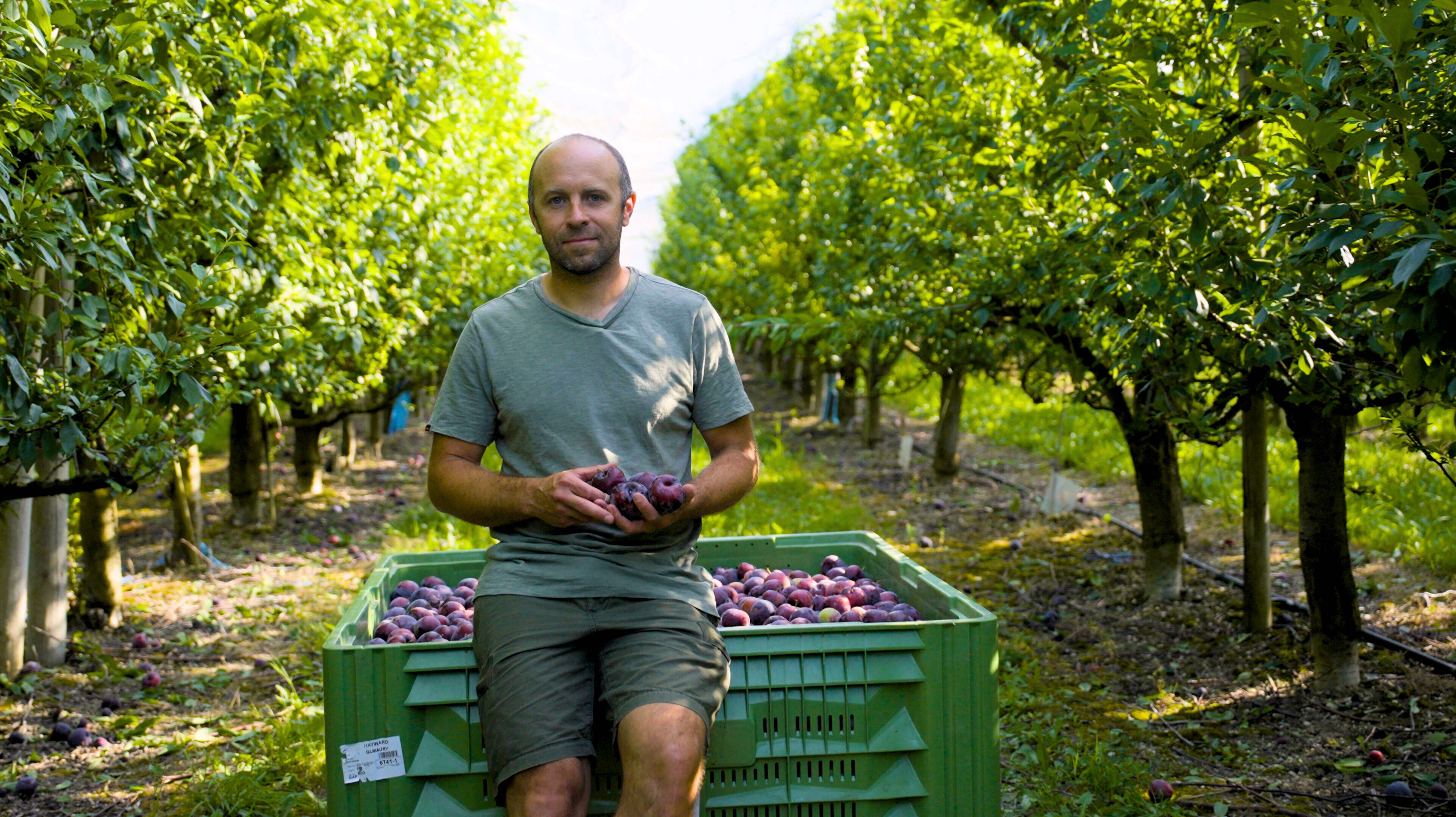
Plums are very much a family affair for the Capels. “I’m the fourth generation [of my family] to work this farm,” smiles Jérôme in an interview with Taste France. “It’s important for us to have worked together for several years in order to pass on the savoir-faire required to produce plums. It is a very technical job, but it’s a job that I am passionate about.”
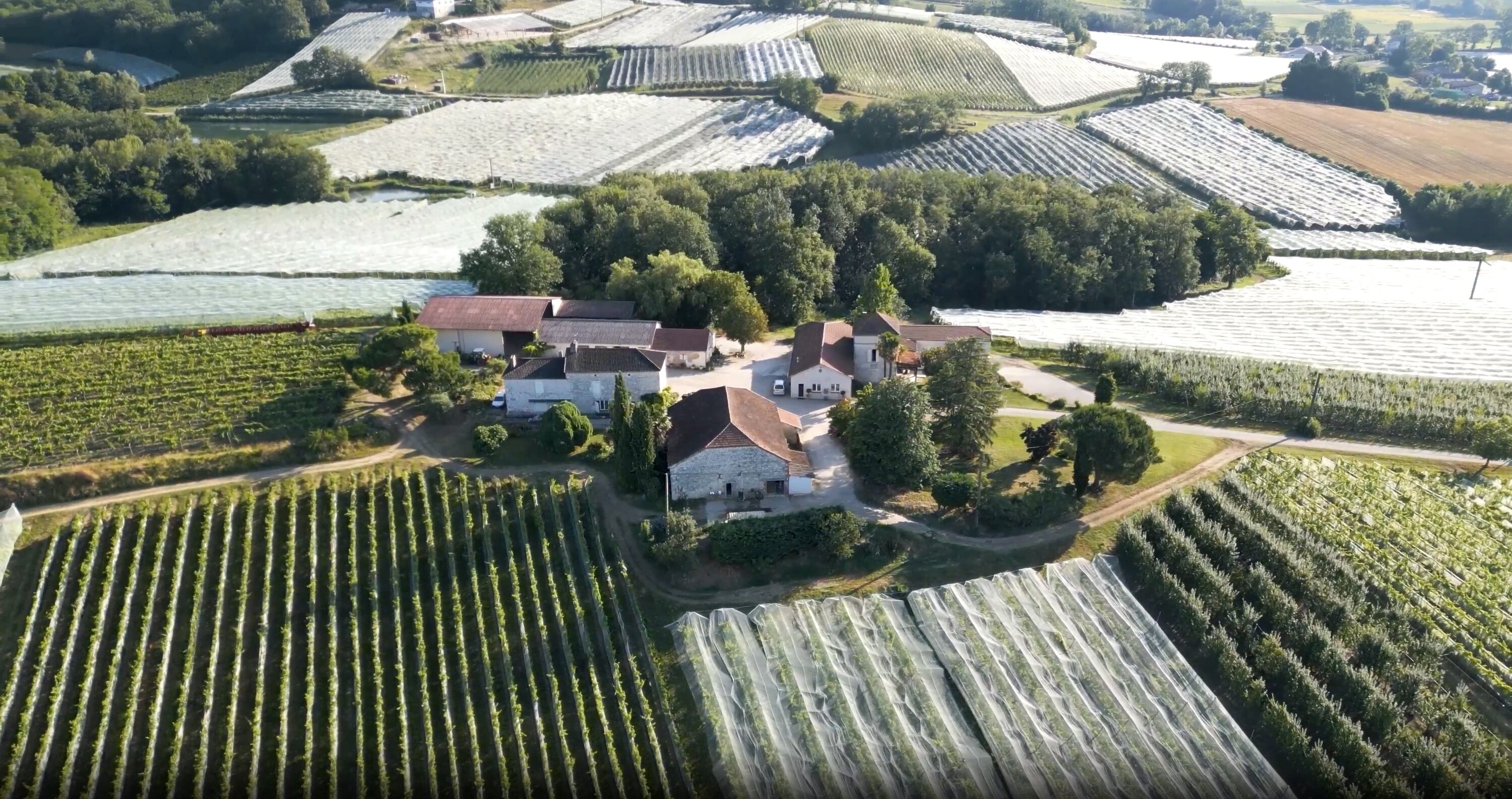
Plum innovative
It is this passion that has helped him endure the last few years of difficult conditions. Since 2021, plum production in France has faced several challenges: unpredictable weather patterns—including late frost and violent storms—and water stress have wreaked havoc on orchards around the country, decimating many crops and delaying harvests, resulting in around half the usual national production. In addition, soaring energy prices have impacted everything from irrigation to transportation. As a result, the market for French plums has been particularly volatile, with prices fluctuating wildly and competition intensifying.
Like many plum farmers, Jérôme has begun to combat these challenges through the use of innovative tools that aid in automating or simplifying the job. Installed among the trees is one such example, a sensitive set of instruments that measure everything from temperature to humidity to precipitation. Jérôme may be unable to control the weather (for now!), but these tools allow him to better manage the irrigation of his crops—in this case, by precisely controlling the irrigation depending on what his trees require.
Thankfully, the 2023 harvest has bounced back, with an estimated 55,000 tonnes harvested—close to its full potential.
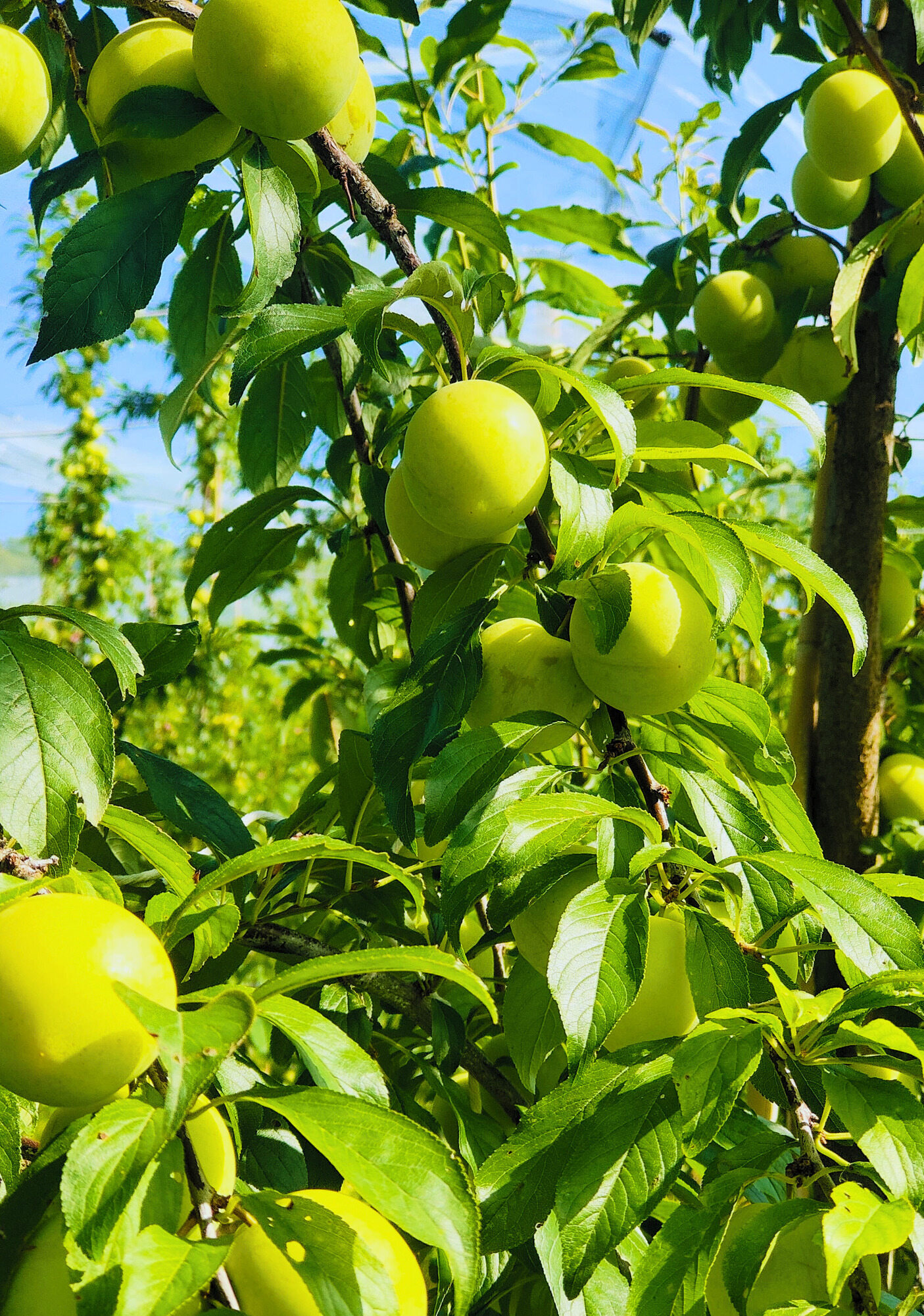
Despite these challenges, Jérôme remains dedicated to cultivating some of France’s favourite fruits. Of his 60 hectares, 35 are dedicated to plums, harvesting around 700 tonnes per year. The remaining hectares are divided between apples and table grapes. When it comes to his plums, he cultivates some 20 different varieties from just two species: Prunus domestica, the traditional French table plum, and Prunus salicina, known as the Chinese plum, so named as it is native to China. These cultivars come in a kaleidoscope of colours: yellow and red, mainly, but also green and blue.
“The green and blue plums are the oldest variety,” Jérôme explains.
The art of cultivation
The Capels live according to the seasons. Production begins with tree pruning at the end of winter, with the first blossoms blooming in early- to mid-Spring. If all goes well, by mid-May and well into June, Jérôme and his team begin to thin the trees. “If a branch has too much fruit, it cannot properly nourish them all,” he explains. “The result is a product without much sugar, so to improve the gustatory quality, we remove the smallest fruit on each branch by hand to ensure each one is given the optimal amount of energy by the plant.”
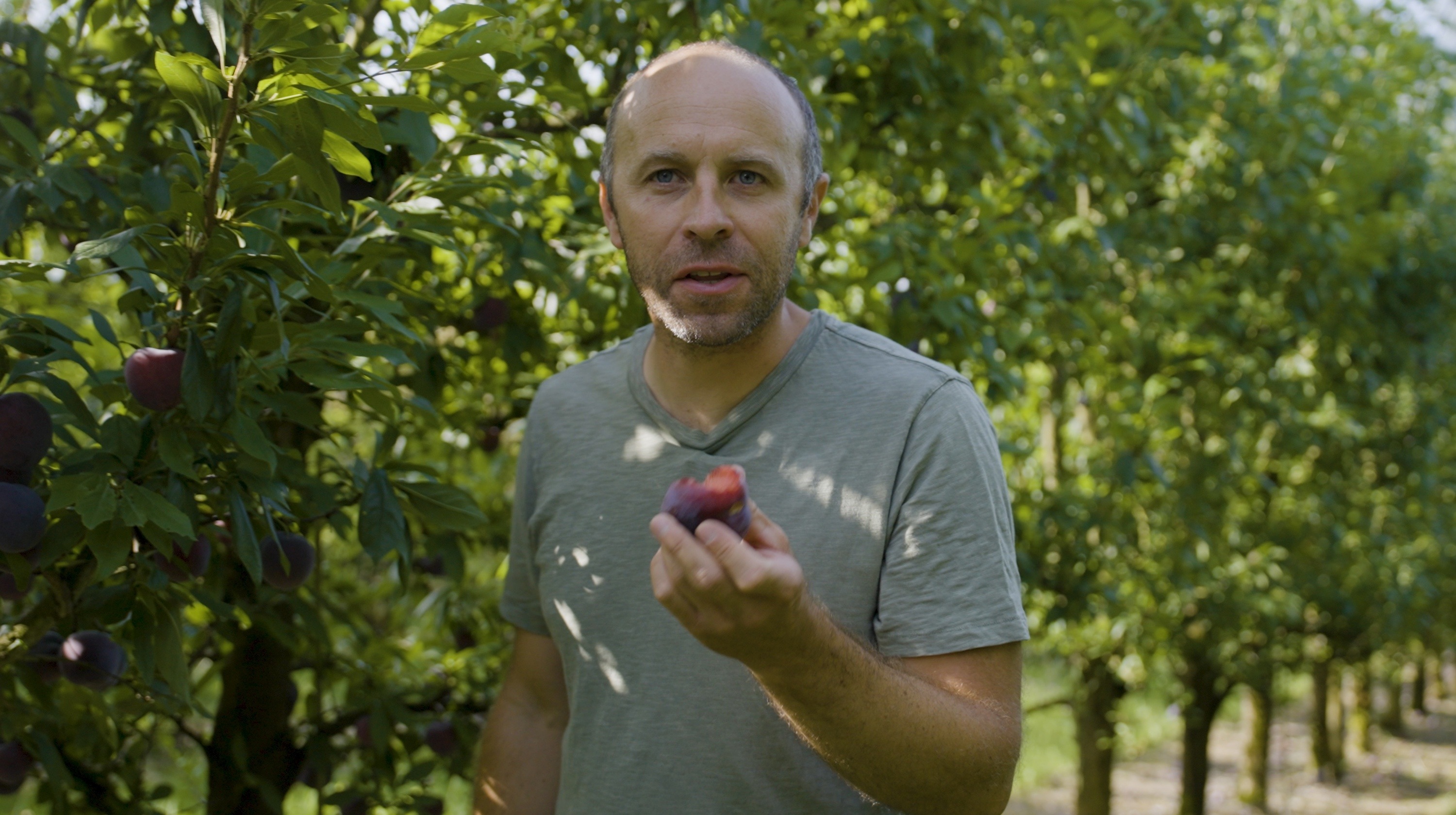
The plums are at the optimal moment of maturity, usually between July and September—“We taste it, it’s as simple as that,” Jérôme chuckles by way of explanation. The harvest is done by hand, each piece of fruit carefully selected by a trained eye and touch before being stored in a cool, refrigerated space at less than one degree Celsius.
“We can maintain the quality of the fruit at this temperature,” Jérôme explains. “They are stored for three weeks before being transported to stores all around France and abroad.”
Plums like these have garnered a reputation for excellence on the international stage. In 2023, French exports increased by 28 percent over the year prior. Belgium, Switzerland, the Netherlands and the United Kingdom (UK) topped the list of biggest importers, with the Netherlands and the UK doubling their imports from 2022. In contrast, and purely coincidentally, French imports decreased by 28 percent in 2023—perhaps due to the industry’s bounce back.
But economic impact aside, plum production is very much a human endeavour. Judged by eye and harvested à la main, plums require a careful hand and a lot of patience to cultivate. It can take years for plum trees to grow to maturity and begin bearing fruit.
“What makes me most proud in my job as an arboriculturist is setting up a new orchard,” Jérôme says. “Planting a tiny tree and one day harvesting its first crop and producing its first fruit: that's something that's driven me since I started out, and it still does”
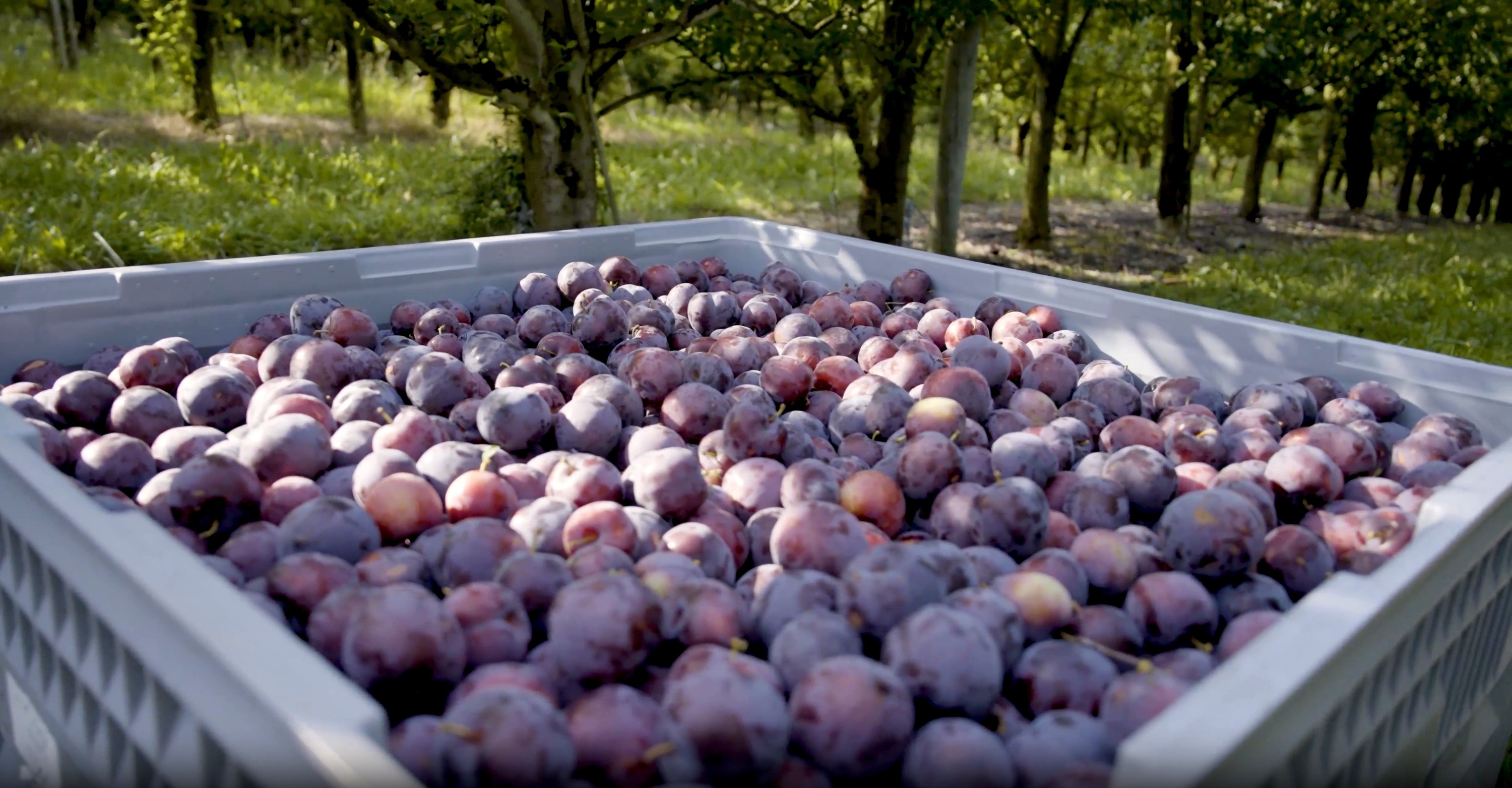
French consumption
Having been cultivated for centuries, it’s hardly surprising the fruit appears in many traditional recipes: from the simple, sticky jams and conserves so popular in Occitanie, to Limousin’s sweet clafoutis, to Mirabelle liqueur from the Grand Est region.
When it comes to consuming plums, the key is selecting the perfect piece. When eating fresh, the fruit should have unblemished skin and yield to the touch, without being too soft. Of course, they are wonderful eaten as-is, but they also make excellent additions to salads or tarts.

